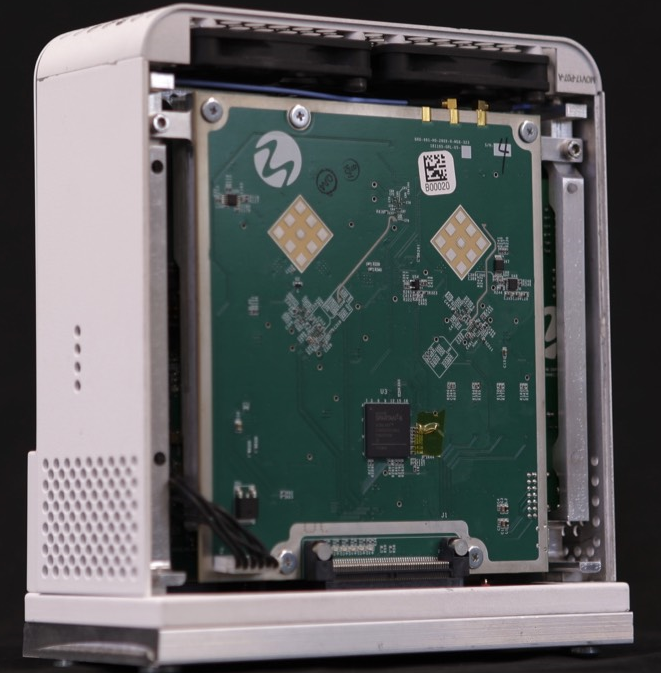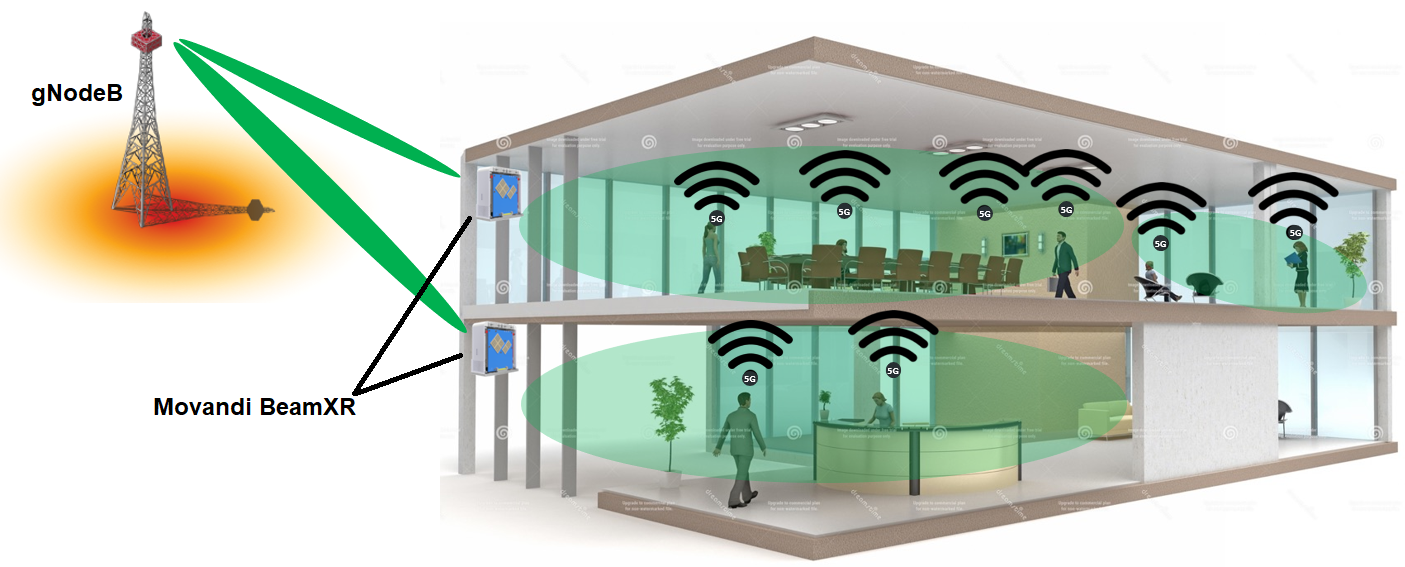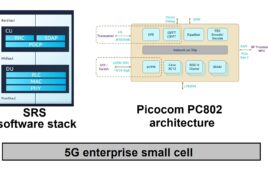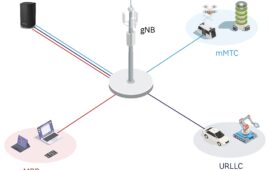Movandi: A small company with big plans
Movandi looks to bring 5G mmWave signals to locations where base stations can’t reach. 5G Technology World spoke with CEO/co-founder Maryam Rofougaran and Craig Ochikubo, SVP business development/marketing to find out how the company brings 5G indoors work and how its coping with COVID-19.
Having just completed a third round of funding, Irvine, Calif.-based Movandi is on the cusp of bringing 5G mmWave products to market. Starting by developing mmWave front-end ICs and incorporating them into modules, the company has brough those modules into systems for carriers to bring 5G indoors, something that mmWave signals can’t do on their own. That company now has products deployed with carriers that are in final test. Work continues despite having to cope with COVID-19.
5GTW: What is Movandi’s focus?
Rofougaran: Movandi is focused on the mmWave aspect of 5G, which is needed to deliver 5G’s promise of high throughput and low latency. We’re focused on making sure that mmWave 5G will happen. 5G mmWave has problems penetrating buildings and we’re addressing that problem, which has become apparent as deployments have started. The traction we have gained has let us attract interest from venture capitalists, partners, and customers.
We have developed products that let 5G mmWave signals work inside buildings. They are currently going through trials and that let us raise the capital needed to grow the company.
5GTW: Where are the trials taking place?
Rofougaran: Testing takes place at the Movandi office, customers, and test labs. Customers and Movandi are doing the last stages of testing. Before shipping a product, we must make sure it’s been tested in the field running actual use cases.
Our first product is a complete system called BeamXR (Figure 1). It uses custom RFICs and antenna arrays that are integrated into a module to produce and process the analog and digital signals. It makes sure that the mmWave signal can get inside a building. mmWave signals can’t penetrate buildings. Regular glass can attenuate signals by 6 dB and low-e glass can have almost 40 dB of loss. Signals are already weak when the reach a building and can’t get inside.

Figure 1. Movandi’s BeamXR brings 5G signals into buildings. The two 3×3 antenna arrays focus signals at nearly outdoor small cells. It uses the company’s ICs and RF-front-end modules. Image: Movandi.
The BeamXR resides just inside the building, taking a weak beamed signal and lighting up the entire room inside the building with a range over 200 ft. It does the beamforming to connect to the base station. Every piece of customer-premise equipment (CPE) and mobile handsets can now have access to the base station (Figure 2).

Figure 2. Movandi’s BeamXR connects to a base station over mmWave and illuminates the inside of a building with 5G. Image: Movandi.
5GTW: If the mmWave signal can’t penetrate certain kinds of glass, then how can the BeamXR communicate with the base station?
Rofougaran: We have special builds of the repeater that use the same IP but built in different configurations to handle high window losses. Signal attenuation from multipane low-e glass can reach 30 dB or more. The same IP in different configurations can address many different consumer and enterprise indoor applications and outdoor network repeater applications.
5GTW: What else is Movandi working on?
Rofougaran: In addition to the BeamXR, we are working with partners to develop Open Radio Access Network (O-RAN), CPE, hot spot, and small-cell products. Our modules connect to a customer’s product such as a modem. The modules are scalable; a 2×2 antenna array could go into a cellphone but could be scaled to over 500 elements using more chips and antennas to make a bigger module for a macro base station. We can adapt to any application if the customer has the modem and baseband processing capability. The BeamXR contains our modules. We’ve implemented our signal-processing algorithms in a FPGA and will continue to optimize them in the future. We provide the entire reference design and work with manufacturers to ship it to the customer.
5GTW: Do you plan to produce other products with your RF front-end modules?
Rofougaran: With our RF front-end modules, we plan to produce in 2020 a fixed wireless CPE where our module connects to a partner’s baseband modem.
Later in 2020, we plan to produce a multi-band, multi-beam outdoor router than can perform the same functions as today’s small cells but at a much lower cost. The router won’t require a fiber connection and is thus easier to install. In 2021, we plan to produce a mesh network so that users can get maximum 5G coverage inside a building. In 2021, we expect our modules to become part of a portable hotspot/router.
5GTW: How far do you expect the additional funding to move Movandi?
Rofougaran: We will be able to expand 5G deployment including the router and O-RAN products. But, to ship product, we must build product. The additional funding will give us the money to manufacture products while continuing to innovate.
5GTW: Have you seen any slowing in the pace of 5G during this time of the COVID-19?
Rofougaran: We haven’t seen any slowing at all. Our primary customers and partners are the service providers. We’re seeing considerable activity in the U.S., Korea, and now Japan. There’s no slowdown. Indeed, we’re seeing an increase in activity. China and Europe are looking into mmWave as well. With so many people working from home, there’s greater interest deploying 5G.
COVID-19 has shown that people need internet access to work at home. Throughput and latency have grown in importance, but we’re also seeing emerging applications. 5G can help with these applications. A recent FCC auction added 37 GHz, 39 GHz, and 47 GHz to wireless applications. We were surprised to see Verizon spend another $1.8 billion on these frequencies after having invested heavily in 28 GHz. AT&T and T-Mobile have also added mmWave spectrum. Carriers are also increasing spending to accelerate 5G deployment. There’s eagerness to deploy mmWave in 2020.
5GTW: How have you managed to conduct your testing with everyone working at home?
Rofougaran: In the early stages of the company two years ago, we did most of the testing in our lab. Today, we have equipment under test at customer locations. Our lab is set up to the point where we can remotely perform even lower-level testing. Once in awhile, one or two people will go to the lab to configure a setup. Equipment at our customer sites are constantly under test and we can also gain access to them from home. We can monitor their conditions and see how they are working with a gNodeB and even perform software upgrades from home. Sure, we’d like to have people in the lab, but working from home has not slowed us down. If something needs to be changed at the customer site, they have people who do that.
5GTW: You mentioned that Movandi is developing O-RAN products. Why has O-RAN gain so much traction?
Rofougaran: Recently, we’ve discovered that the radio-access network needs to be open, virtual, and interoperable. Opening the RAN enables virtualization and AI because it’s not tied to one manufacturer’s hardware or software. The open concept allows for more innovation and easier upgrades and lower costs.
Ochikubo: Open RAN has taken hold over the last eighteen months. It’s enables activity such as virtualized RAN (vRAN). Rakuten in Japan has successfully deployed a virtualized network. We’re seeing how mmWave is taking advantage of virtualization, which lets carriers move network resources where needed. The gNodeB needs only a small radio unit. The fiber that connects the radio unit to the virtualized functions is what’s called the fronthaul. Before 5G, the base station would have to do all that processing that can now take place in the cloud.







This just in:
Verizon announced partnerships with Movandi Corporation, Pivotal Commware, Inc. and Wistron NeWeb Corporation (WNC) to provide cutting-edge extender technology that will amplify millimeter wave coverage in public spaces and in homes, buildings and more. Not only can extenders expand coverage inside, they allow more customers to add more devices to the network and enhance millimeter wave coverage at outdoor locations. Verizon is also partnering with Movandi Corporation, NXP™ and Qualcomm Technologies, Inc. to develop the latest chipset technology to enhance experiences and expand coverage for our 5G Home customers.
CNBC names Movandi to its top 50 most disruptive innovators. The show airs June 7, 2021 at 6PM ET. Watch it here you YouTube. The segment starts at 44:06.
https://www.youtube.com/watch?v=dpTluJoB-IU